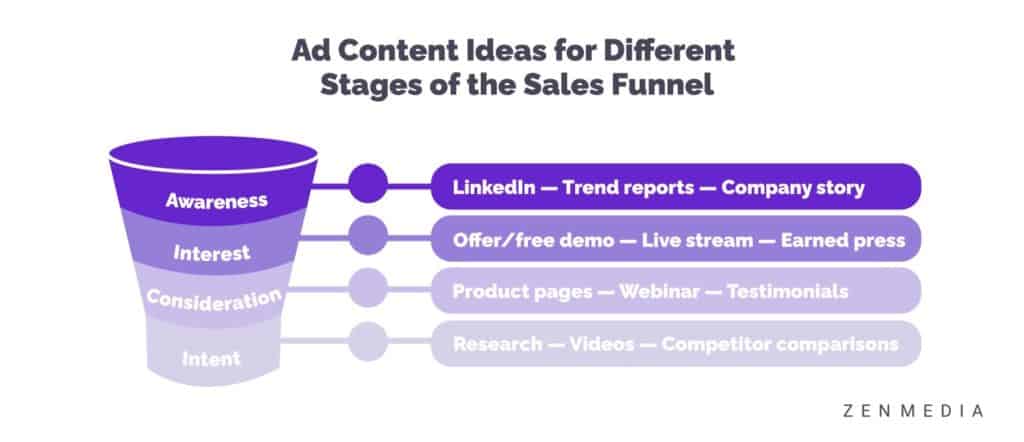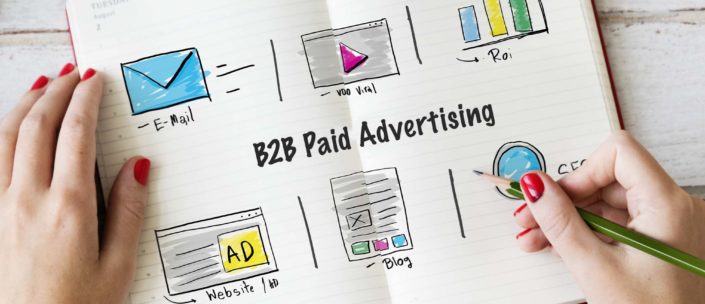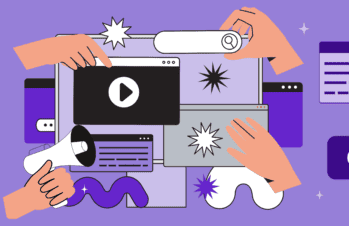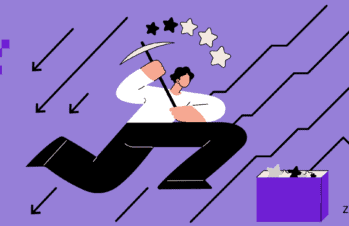It’s easy to fall into the trap of using B2C strategies for your B2B goals. But the truth is, the two are vastly different in a number of ways.
What works for the goose will not work for the gander. And this is especially true with paid ads.
How are B2B ads different from B2C ads?
Goals: You’re not expecting a B2B buyer to make a purchase right after clicking an ad like you could for B2C—so the goals (or pay-per-click, PPC) are different.
Timeline: B2B buyers are averaging around 27 touchpoints before becoming customers—so the timeline is much longer.
Relevant post: How COVID-19 has changed the B2B buyer behavior
Keywords: keyword search volume in B2B is lower than in B2C, so the way you set up your ad sets will also be different.
There is, however, one thing that is absolutely true whether you’re B2B or B2C, and regardless of what industry you’re in: Paid advertising is critical if you’re going to stand out amidst the online noise, grow your brand, and convert customers.
So how do you make the most out of this invaluable tool? Let’s take a look.
First, why do you need B2B paid advertising?
B2Bs need a solid paid advertising strategy because without paid ads, there’s simply no way to be heard amid the noise of the online marketplace.
Organic reach is important, and it’s something brands should still be working toward expanding through strategies like content marketing, social media marketing, and influencer marketing.
But since there are roughly 1.145 trillion megabytes of data being created online every day, and your brand is competing with thousands of other brands for your customers’ attention—organic reach alone won’t be enough to sustain growth over any period of time.
Paid ads allow you to not only reach a wider audience but also to create those additional, necessary touchpoints that take users from prospect to buyer, giving them as many opportunities as possible to convert.
What B2B brands need to know about creating a paid ads strategy
There are a few guidelines that every B2B brand should know when creating an effective paid ads strategy:
- Ad copy should be designed to prequalify leads, not necessarily to get them to convert.
- Search volumes are lower, which will impact your keyword research.
- Just like you do with content, you should be creating ads for different stages of the sales funnel/customer buying journey.
For a detailed walkthrough on how to actually create an ad campaign through Google Ads, read The Ultimate Guide to Creating a Search Engine Marketing Strategy
Let’s break these 3 key guidelines down a bit further, shall we?
Ad copy should be designed to prequalify leads, not necessarily to get them to convert
In B2C, ads are often designed to get people to “buy now” or “preorder today.”
In B2B, however, the goal is different. B2B buyers won’t click to buy, but they may click to:
- Download valuable content.
- Watch a video.
- Sign up for a free demo.
- Watch a LinkedIn live stream.
- Learn about your latest product.
- Request pricing information.
As you can see, each of those clicks would move a prospect further along the customer journey from wherever they currently are.
So when you’re developing your ad strategy, this is something to think about: What prequalifying actions do you want people to take?
Each action can be the goal for one ad set.
Let’s create an example with that first bullet point, “download valuable content.”
Let’s say you have a valuable whitepaper, report, or other piece of original research that you want to offer as a download in exchange for an email address.
First, you’d create a landing page specifically for that one piece of content. To do this, you need great web design, a strong call to action, and a form for users to fill out with their email address, name, job title, and any other information you want to ask for (remember, privacy is a huge issue right now, so keep your forms as simple and non-intrusive as possible).
Once your landing page is live, you’d create the ad set to bring people to it.
This involves choosing a set of keywords that you’ll build your ads around and, ideally, running three or four versions of the same ad to see which performs best.
Over time, you’ll need to update your ads. This is so the people you’re targeting don’t see the same ad over and over, which will both desensitize them and potentially annoy them.
If you have multiple buyer personas you’re targeting, make sure you create ad copy that’s targeting each persona.
Search volumes are lower, which will impact your keyword research
In B2B, keywords are often more specific than in B2C, and search volumes are lower. Although the way you do keyword research will be the same, you may need to search more widely and thoroughly to make sure you’re identifying all the relevant keywords that your prospects search for.
For B2B, this could also include acronyms, shorthand, and other industry terms that customers may search for.
This, of course, also means that many of the keywords you target will be easier to rank for, which is a positive for your brand overall.
Relevant post: 50 B2B SEO Strategies
Just like you do with content, you should be creating ads for different stages of the sales funnel/customer buying journey.

An effective content marketing strategy relies on content that targets users at each stage of the buyer journey or in the sales funnel.
You need everything from highly specific user guides, to general FAQs, to pieces on industry trends, and more. The goal is to have something valuable for prospects no matter where they are in their buying journey, and no matter what it is they need to know.
Similarly, you want to create separate ad groups that target users at separate stages. Let’s use some more specific versions of the examples from earlier, mapping them to different stages of the funnel.
For the Awareness stage, you could create ads for:
- Your company’s LinkedIn page
- An industry trends report your team created
- Your site’s “About Us” page
For Interest, you might make ads linking to:
- A free demo sign-up
- Your YouTube channel
- A LinkedIn video or live stream
- A piece of PR your brand or executive team received
For Consideration, you could use:
- A piece of thought leadership
- Your brand’s product page on a popular review site
- A webinar sign-up
- Customer testimonials
Then there’s Intent. Ads for this stage could link to:
- More in-depth content, including original research
- Videos about your product/service, company, and leadership
- Price and/or feature comparisons of your product and your competitors
- Pricing information
For customers in the Evaluation and Purchase stages, ads are still important, but most of their work is done. After all, if a lead is still clicking an ad in order to get to your website, they likely haven’t decided to evaluate you that seriously yet.
Once you’ve developed your different ad sets based on your keyword research, written your ad copy, and deployed your ads, it’s time to watch and adjust. Use your analytics software to determine which ads are working and which aren’t converting. Don’t be afraid to pivot if something isn’t working.
And if you need help, give us a call!







